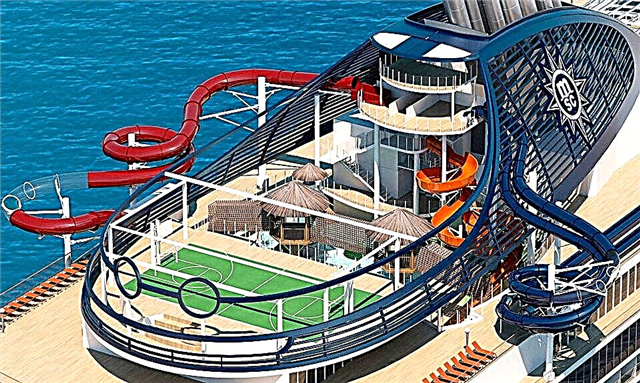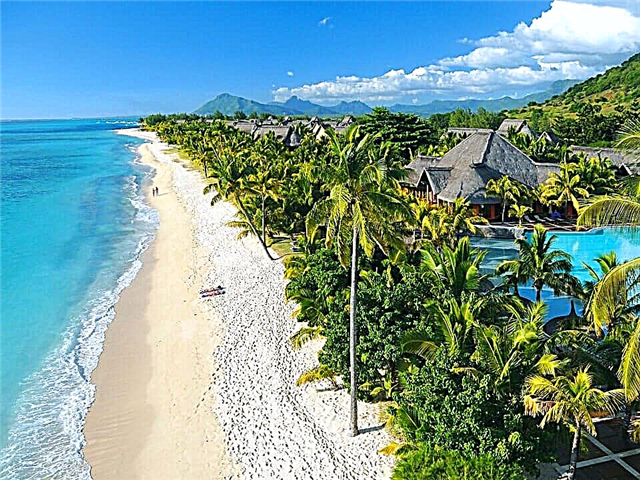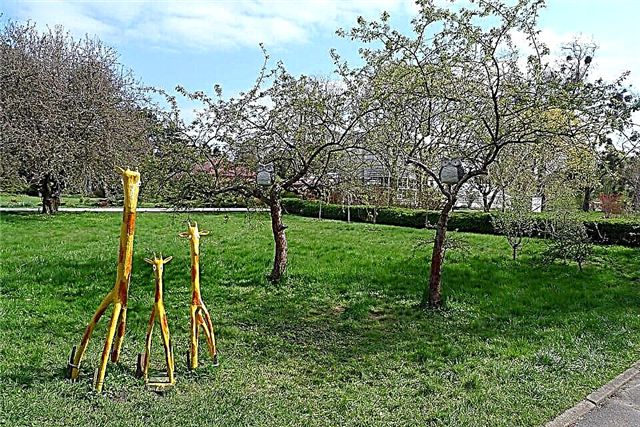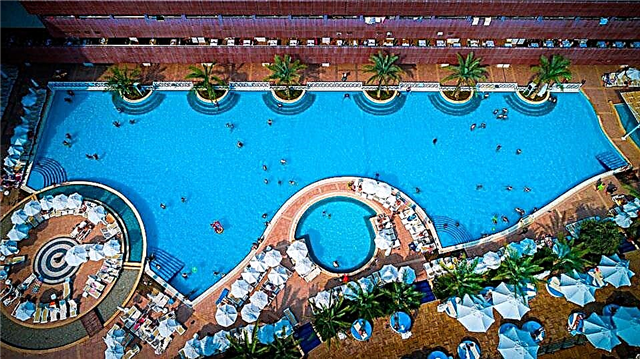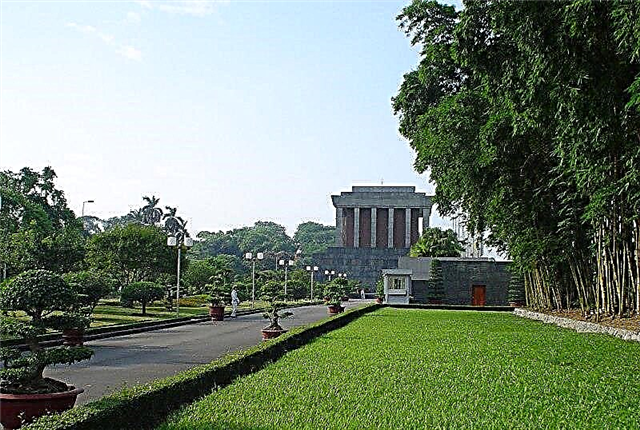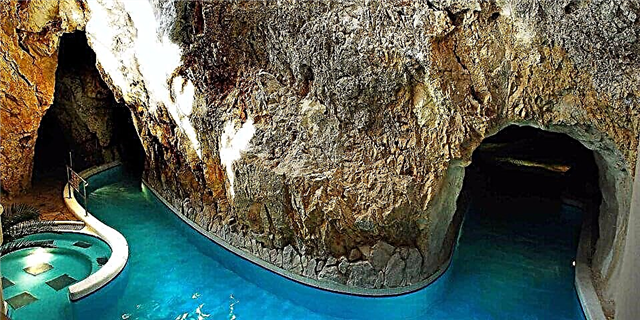Budapest is the capital of Hungary, formed in 1873 by the merger of three ancient cities - Buda, Obuda and Pest, located along the banks of the Danube. Buda and Obuda, located on the western bank of the river, captivate with the atmosphere of old streets and an abundance of historical monuments. Pest, which occupies the eastern bank of the Danube, admires the magnificent beauty of architecture and the scope of the avenues. It is the only capital city-resort in Europe with healing thermal springs. If you are planning to visit this stunning city, it is better to plan your route in advance. Our guide will tell you what to see in Budapest in 5 days on your own, so that the trip will be captured by a vivid event in the photo and in memory.
1 day
The route of the first day will be the longest and longest. It will take about 5-6 hours. It is better to combine hiking with travel by public transport in order to periodically rest, enjoying the view of the city from the window of a bus or tram. Therefore, buy your travel tickets in advance. The beginning of an independent voyage is the Erzsébet tér square, the end point is the Széchenyi square. Let's talk about what you will see along the way.
Erzsebet Square
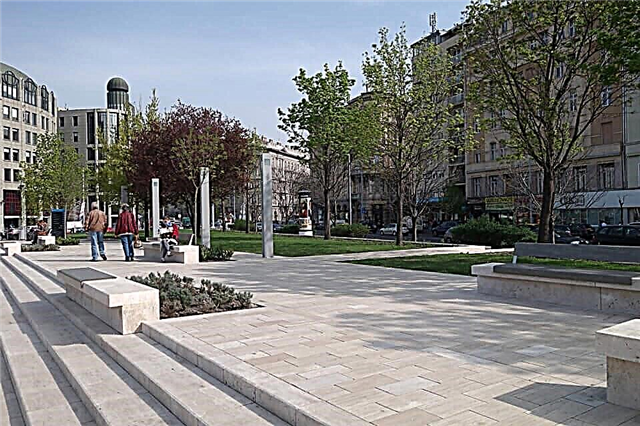
Erzhebet Square is one of the most beautiful squares in the center with buildings from the 18-19 centuries, capable of competing with palaces in beauty. The square will surprise you with a memorial to Michael Jackson and a fountain with a transparent bottom. Looking into the park with the Ferris wheel towering over it, you will see the Danube fountain with female figures representing the Danube tributaries: the Tisu, Drava and Sava rivers, crowned with a statue of Neptune. Then, taking bus number 16, go to Széll Kálmán tér (final stop), where you get on tram number 59 or 61, following from the Danube.
Get off at stop 3, Városmajor, in the direction of the circular building of the Budapest Hotel, where you have to cross the tram lines to get to the cogwheel railway. From there, take train 60 and continue to the Gyermekvasút terminal station. This is an old road that was laid through the picturesque hills in 1874. After exiting the train, go to the Children's Railway, from where continue to the Jánoshegy stop, seeing the Elizabeth Lookout.
Elizabeth Lookout Tower
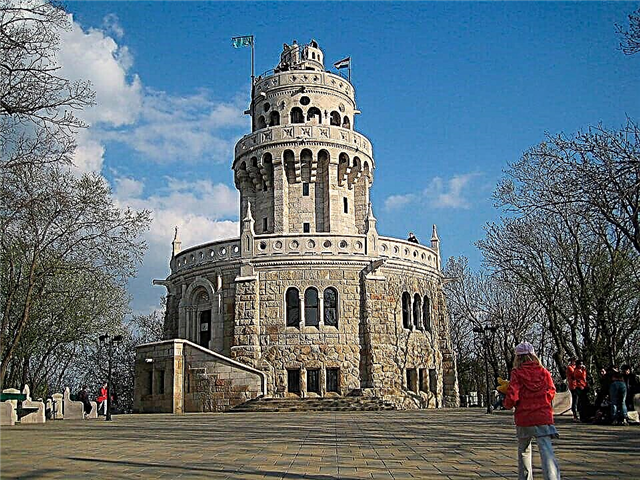
Following the sign Erzsebet Kilato, you climb the mountain to a multi-tiered observation tower, which looks like a cake. Each tier, where one climbs the spiral staircase, has its own observation deck. From its highest point, located at an altitude of 527 meters, a breathtaking view of the Buda Hills, a green valley and a delightful Parliament opens up, which can be enjoyed free of charge from 8.00 to 20.00. After descending from the tower, head to the cable car.
Libego cable car
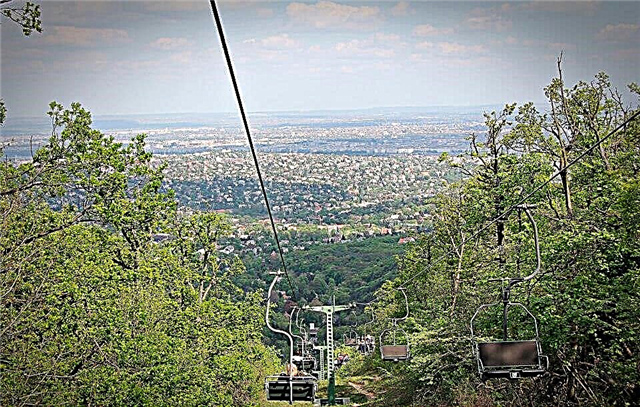
The cable car stretches for 1040 meters with a height difference of 262 meters. It is an open suspended cradle moving at a speed of 4 km per hour. To use it, you need to buy a ticket for 1000 HUF. You have to get into the cradle and go on the go with the help of the staff serving them. The descent takes place smoothly, admiring the beautiful views, sailing over the rooftops, courtyards and between trees. It takes no more than 15 minutes.
The cable car starts working at any time of the year from 10:00, in the summer until 19:00, and in the winter until 16:00, in the fall and spring until 17:00. Going down, go to the stop of the bus number 291, which you pass five stops, getting off at Budagyöngye, where you change to tram number 61, next to the round hotel "Budapest". Get off at Széll Kálmán, the second stop after the hotel, and walk to Buda Castle.
Buda Castle
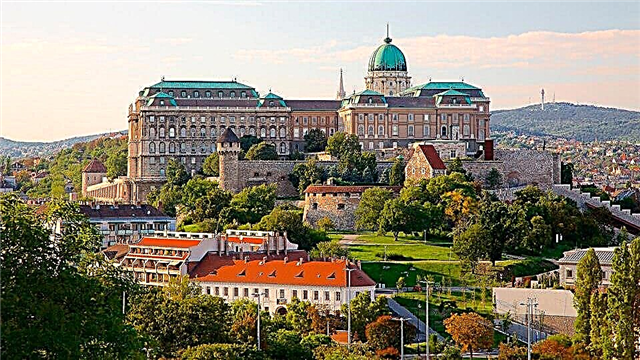
A narrow medieval street leads to the 14th century St. Matthias Catholic Church, built in a pompous late Gothic style. It is a large three-nave temple, part of the Buda Fortress complex, with the main entrance overlooking Holy Trinity Square. On the north side of the main facade, the church is bordered by the tower of King Bel, and on the opposite side is the Fisherman's Bastion. The Church of St. Matthias stands out for its multiple side chapels with an openwork decor of the facades and an 80-meter bell tower.
The territory of the fortress, which has become an open-air museum, is free of charge. The wards charge a fee, which should be checked on the spot. View the interior from 9.00 to 17.00, on weekdays, on Saturdays until 13.00, and on Sundays from 13.00 to 17.00.
During the reconstruction of the 19th century, fragments of ancient Roman buildings that were included in Aquincum were discovered on the territory of the fortress. The most significant attraction of the fortress is Buda Castle, which is one of the sites under the protection of UNESCO. The castle-fortress was built in the 13th century and served as the residence of the Hungarian kings for many years. On the castle hill, don't go past the Royal Palace.
Royal Palace
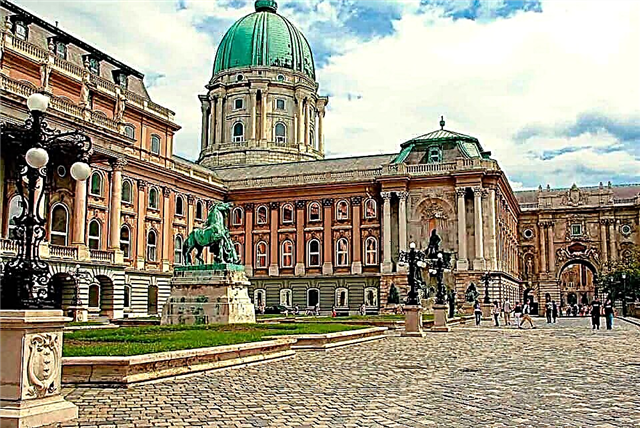
The Royal Palace has become an adornment of the right bank of the Danube. The building, built at the beginning of the 20th century, appears in the grace of the Baroque style. It is impossible not to admire the baroque dome, ornamental gate with the mythical bird Turul, clutching a sword in its claws, which conquered its homeland for the Hungarians. The palace decor is impressive with sculptural compositions and luxurious fountains.
Inspired by the legend of the love of King Matiyash and the girl Ilonka, the fountain in the courtyard, depicting their figures, brings happiness to lovers. Today, the Royal Palace is a cultural center that includes an art gallery, a national library and a history museum. It can be viewed from October to March every day, except Mondays, from 10.00 - 18.00, and in summer until 19.30.
Funicular
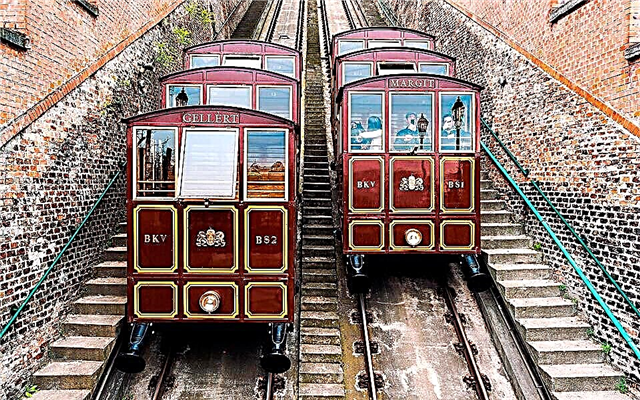
From the Royal Palace we go to the platform with the Shiklo funicular, built at the initiative of the son of Count Széchenyi in 1870 and reconstructed at the end of the last century. It works from 7.30 am to 10 pm. After purchasing a ticket for 1200 HUF, get into a 19-century-style trailer with three multi-level cabins. There are 2 registered carriages on the funicular - Gellert and Margit.
The funicular overcomes the distance of 95 meters in 90 seconds, and you find yourself at the bottom station - Adam Clark Square with the Kilometer Zero monument. There is a staircase next to the funicular for those wishing to walk this path.
Szechenyi bridge
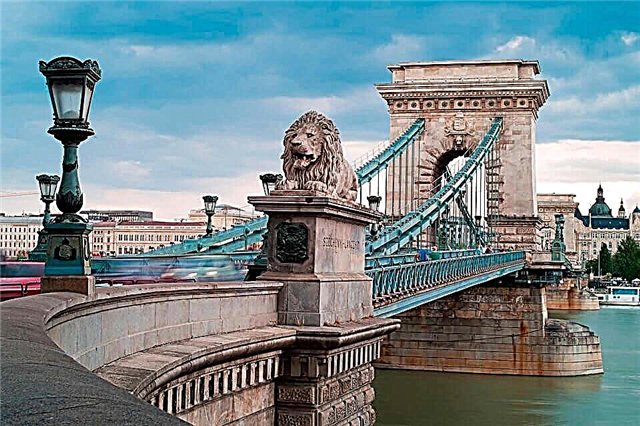
Leaving the funicular, we find ourselves next to the Szechenyi chain suspension bridge, which connected Buda with Pest in 1849 - Adam Clark Square with Roosevelt Square. The bridge was built thanks to the famous politician Count Szechenyi, who invested a lot of effort and money in the construction, and therefore was named after him. It is called `` chain '' because of the large number of thick chains that support the bridge deck, which stretches for 375 meters.
The picturesque suspension bridge has become the hallmark of the city, adorning all its tourist guides. On both sides, the bridge towers are decorated with the coats of arms of Hungary and sculptures of smiling lions. The historical bridge is covered with legends, according to which it is worth making a wish, crossing it to the other side or sailing under it on a boat - the wish will come true. Come to the bridge at dusk when the bridge is mesmerizingly illuminated by numerous chain lamps and floodlights on the bridge supports.
Szechenyi Square
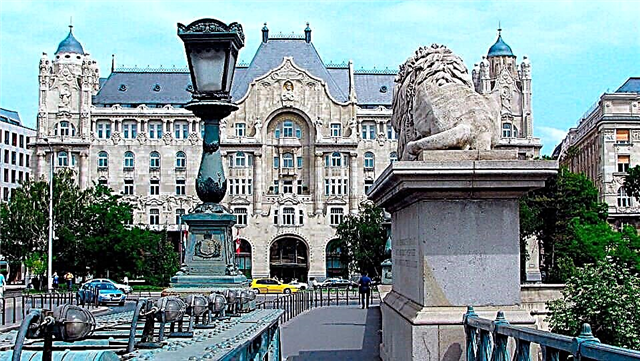
Crossing the bridge, you will come out to Szechenyi Square, where a luxurious Art Nouveau building - the Gresham Palace - is striking. The architecture is striking, combining whimsical towers with spiers, graceful bay windows, columns and arches into one whole. A hand reaches out to capture the facade with floral patterns and numerous sculptures on the pediment and the forged entrance gate with walking peacocks.
Today, the palace houses the luxurious rooms of the Four Seasons Hotel Budapest.Two monuments on the square are of interest - the Hungarian thinker Ferenc Deak in the south and the politician Istvan Szechenyi in the north.
2nd day
We suggest starting the excursion of the second day in Pest from the Szent István tér square, and end with a walk in the historic Lipotváros quarter. We will outline the main attractions of the route in the order of their visit.
Skip-the-line: Széchenyi baths full day - 18 €
Classic, Premium or Deluxe hop-on hop-off bus - 16.20 €
Full day at the Gellért Spa center without queues - 19 €
2-hour Danube cruise with live music - 21 €
Danube cruise with candlelight dinner - 60 €
Organ music concert at St. Stephen's Basilica - 20 €
Budapest Tourist Card - 22 €
Basilica of St. Stephen
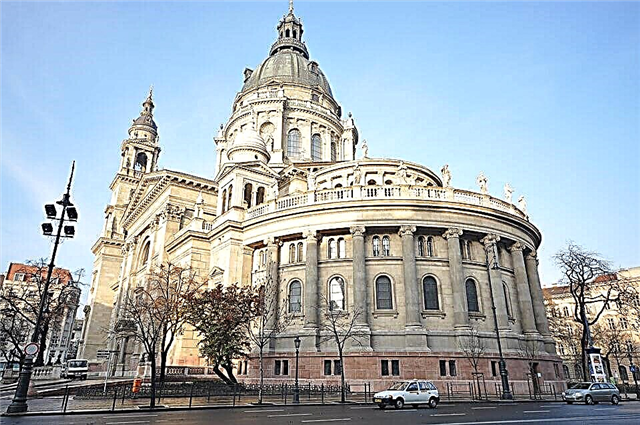
On the Szent István tér square, attention will be drawn to the building of St. Stephen's Basilica - the largest cathedral in the Hungarian capital. Built in the form of a Latin cross in the neoclassical style, the temple rises 96 meters above the city. It is available to watch it inside on Monday-Friday from 9.00 to 17.00, on Saturday from 9.00 to 13.00, Sunday from 13.00 to 17.00.
It is worth at least a few minutes to go to the basilica to enjoy the beauty of the interior with elaborate mosaics and marble columns. Here you can climb to the dome, where there is an observation deck, and take a bird's-eye view of the entire Pest with your gaze and camera lens. You can climb to the site from 10.00 to 16.30 in winter and until 18.30 in summer for 1.7 €. No buildings are allowed above the temple in the center of the capital.
Andrássy Avenue
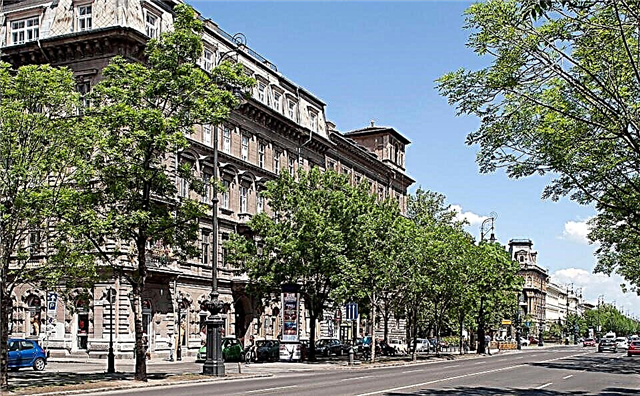
Andrássy Avenue begins from St. Stephen's Square, nicknamed for the scale and picturesqueness of the Champs Elysees in Budapest. It makes an enthusiastic impression with buildings and mansions built by eminent architects in the guise of a pseudo-historical style. Walking along the avenue, you will enjoy the view of the Opera City Park Varoshligeto Theater, erected in the neo-Renaissance style with baroque details and 16 statues of famous composers on the facade; the French Renaissance of the Drechsler Palace, which housed the Institute of Ballet.
Turning onto Nagymöse Street, considered the local Broadway, you will see a gallery of unusual sculptures and traces of famous Hungarian artists on the asphalt. The street is literally dotted with stylish cafes, theaters and a pretty piece of Paris - its Moulin Rouge. From here you can walk to the city park or take the Kodály körönd metro line 1 and after 2 stops get off at the Hősök tere station.
Varoshliget city park
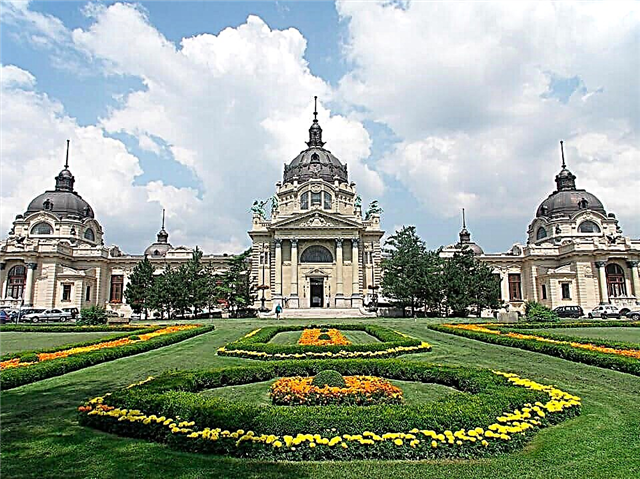
Leaving the metro, find yourself on Heroes' Square with two semicircular colonnades dedicated to the heroes of Hungary, where between the columns there are bronze sculptures of the rulers of Hungary from the 9th-14th centuries from the Arpad dynasty. The towering column in the center is crowned with the figure of the Archangel Michael. Behind the colonnade begins the Varoshliget City Park, which is a huge complex with picturesque landscapes, attractions and attractions. The following are especially popular for tourists:
- castle complex Vaindahunyand, built for the 1000th anniversary of Hungary. It combines 21 fragments of Hungarian architectural masterpieces in various styles: Romanesque, Gothic, Renaissance and Baroque. Next to the castle-pavilion you will see an interesting monument to the chronicler Anonymous
- Széchenyi Bath - a luxurious 19th century building and the largest sauna and health complex in Europe with thermal and ordinary pools filled with mineral water
- zoo, where 3 thousand different animals live in conditions close to their natural habitat and enclosures, fenced with glass
- Museum of Transport, established in 1896. It contains all the samples of transport from the 19th century. It will be interesting to get acquainted with real train cars of the past years, a collection of BMW models, with models of sailing ships and steamers of the past centuries
- an eight-meter hourglass set to commemorate the country's entry into the European Union
Leaving the park, head to the trolleybus stop # 70, and drive towards the Parliament until the final stop.
Lipotvaros
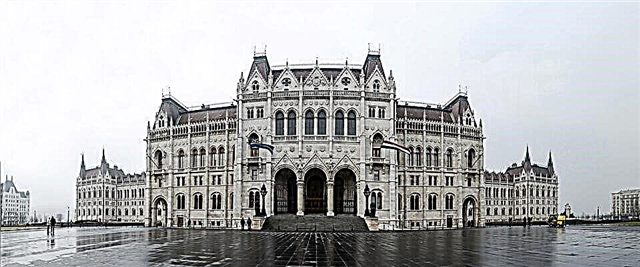
The historic quarter of Pest-Lipotvaros is an unusually beautiful area with a lot of places of interest. Start your tour from Lajos Kossuth Square, where the neo-Gothic Parliament Building, recognized as the largest and most beautiful in Europe, stands out. 40 million pieces of bricks and 40 kg of gold were used for its construction. The entire history of the state is presented on the parliamentary facade with 88 statues of Hungarian kings, famous political and military figures.
In addition to the Parliament, the Ethnographic Museum is of interest on the square, open for visits from Tuesday to Sunday from 10.00 to 18.00, there are many historical monuments. Next, walk to Freedom Square - decorated with luxurious historic mansions, where your attention will be drawn by the building of the Hungarian State Treasury. From here, return to the Erzsébet tér, to continue along the Pest Quay after a short rest.
Pest embankment
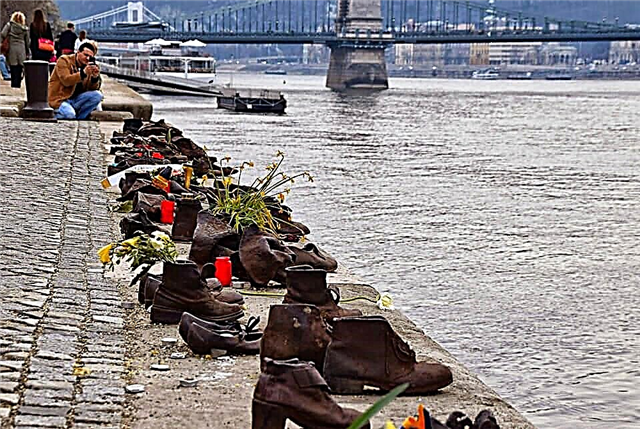
Central Embankment - Dunakorzo stretches in Pest between the Chain Bridge and the Elizabeth Bridge. It looks like a wide cobbled street for walking, with cast-iron benches, trees and flowering flower beds. From here, there are beautiful views of the Buda Castle, the two-tower Church of St. Anne and the Royal Palace. There are many monuments on the embankment, but one of them - representing 60 stone pairs of shoes, placed near the water's edge: belonging to people of different ages and professions does not leave anyone indifferent.
This is a monument to Jews killed in World War II, who were stripped of their shoes before death. Tram tracks with fencing are laid along the rest of the coast. After walking along the embankment to the bridge, take tram number 2, after passing to the Margaret Bridge, change to another tram number 2 and reach the Fővám tér stop, which is practically under the Freedom Bridge. From it you will enter Buda on foot across the bridge.
Mount Gellert
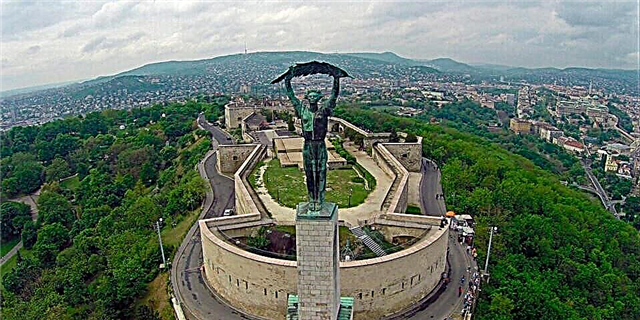
Descending to the Danube, Mount Gellert, representing a pile of dolomite, 235 meters high is one of the symbols of the city. It houses the buildings of the famous baths, the memorial of St. Gelert, the Citadel and the Freedom Monument. In the picturesque area of the mountain, you will find many sites for photographing the views of Pest and the bridges over the Danube. The name of the mountain is due to the personality of the Catholic Saint Gerard, who died from imprisonment in a barrel thrown from the mountain.
You will see a monument to him on the slope of the mountain. Climbing to the top of the mountain with the Citadel of the 19th century, intended for observing the city, you can examine it from the inside for 3600HUF by visiting the Military Museum located within its walls. It is open from 9.00 to 20.00 (May 1-September 30) and from 9.00 to 17.00 (October 1-April 30). Near the Citadel, the Freedom Monument rises 14 meters in the form of a woman's figure with a palm branch in a raised hand and allegorical sculptures of the struggle between good and an evil spirit near her feet. Going down the path, you will come to the Erzsebet bridge, and walk to the stop of trams 19 and 41.
Buda embankment
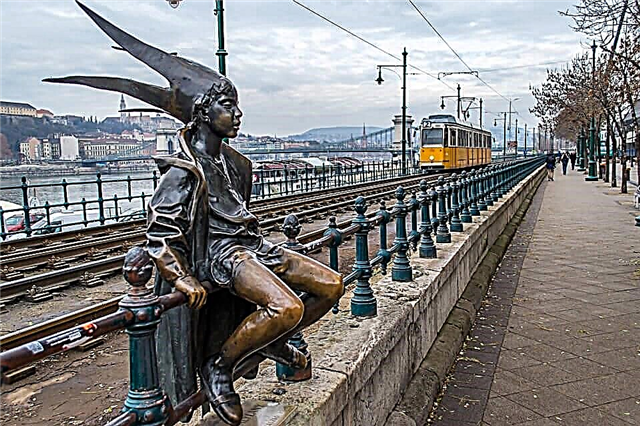
Take a tram ride along the Buda embankment, admiring the beauty of the historic buildings along its coast. The tram line, fenced with railings, runs along the upper level of the two-level embankment. Below is the pedestrian part, paved with granite chips and not protected from water. There are no monuments, cafes and shops on the Buda embankment, there are only benches for rest. Get off at the stop near the Margaret Bridge.
Margaret bridge
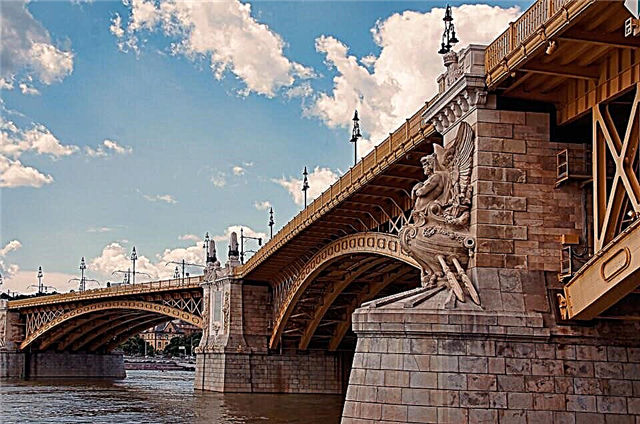
The Margaret Bridge was built in 1876. Its peculiarity was the connection of two shores with a small Danube island, which stretches for 0.5 km in width and stretches for 2.5 km. A walk across the bridge with a visit to the island gives a lot of impressions. After passing the first half of the bridge on the left side in front of the road to the island, cross it along the pedestrian crossing to the opposite side to admire the magnificent views of the Parliament and Buda Castle.
Continue on to St. Stephen's Boulevard, which was built at the end of the 19th century with beautiful houses in the style of the Austro-Hungarian Art Nouveau. Passing the Comedy Theater, the road will lead to the West Station Square.
Western station
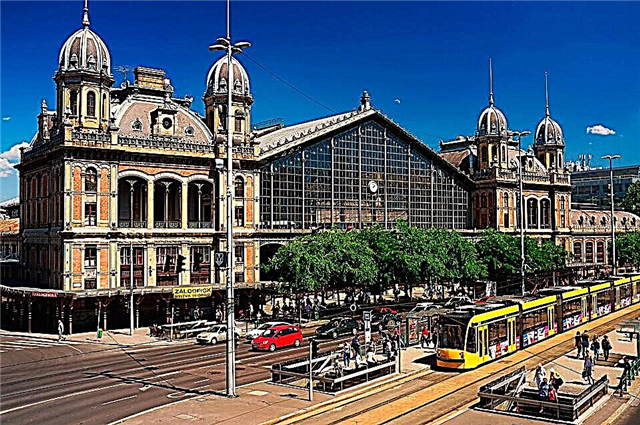
The building of the western station - Nyugati, built in 1877 according to the project of the Eifel company, is considered the most beautiful station in Europe. You will be convinced of this by going around it from all sides. From the pedestrian green square of the Eiffel Nyugati with graceful facade decoration, huge windows, a cascade of lawns and fountains in front of the entrance. evokes an association with a palace. Its main façade overlooking the Grand Boulevard delights with imperial turrets that surround a glass landing above the platforms on both sides.
Go inside the station to see the ancient interior of the hall with ticket offices, other halls, impressive with ancient frescoes and stained glass windows. In the south wing, you will see the most beautiful McDonald's in the world. Today, the station serves for the departure and arrival of suburban trains and for the sale of tickets for international trains departing from Keleti East Station.
Day 3
The third day in the Hungarian capital we will continue exploring the sights of the left bank in Pest. The route runs from Vereshmarty Square to Vaci Street. On the way, you will meet many places of interest, worthy of attention and capture on photos and videos.
Vereshmarty Square
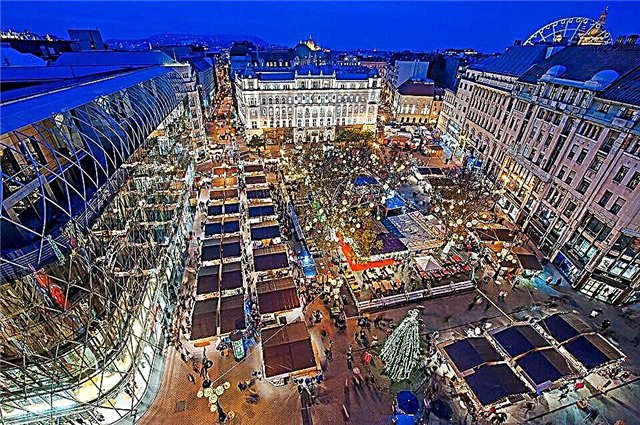
Start at Vereshmarty Square, surrounded by elegant old buildings from the 18th and 19th centuries and beautiful new houses. The square is named after the famous poet Mihai Vörösmarty, whose marble monument stands in its center. The figure of the poet, standing on a pedestal, is depicted as reading to the people his creation "The Call". A fountain with streaming jets of water from the mouth of lions and unusually beautiful lanterns attract attention on the square.
Stop by a famous old pastry shop to sample traditional Hungarian desserts in a pristine setting, with damask walls, antique artist paintings and elegant tables with wicker chairs. After seeing the beauty of Vereshmarty, head to the Deák Ferenc tér square - a beautiful place and transport interchange.
Deak Ferec Square
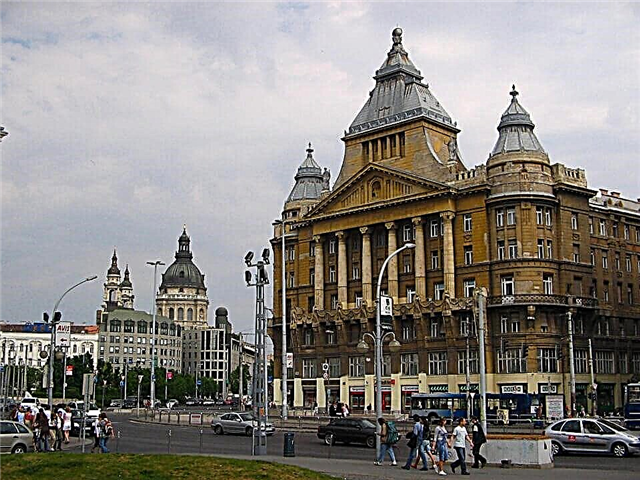
This is the largest square in the city named after the 19th century politician Ferenc Dick. First of all, it is notable for the location of the old Lutheran church, built on the foundations of the 17th century. The neoclassical building is decorated with a pair of Roman columns in front of the entrance, and the facades from the courtyard with bronze reliefs. A bell tower rises above the temple and a chapel dating back to 1829 stands nearby. Right on the square is the second neoclassical cathedral, consecrated in honor of St. Stephen.
Another historical building - the Anker Palace, 53 meters high, looks colorful in the architecture of an eclectic style. A baroque building belonging to the Budapest government attracts attention. In its courtyard you can see an exhibition of medieval sculptures. Then it is convenient to walk to the Servite Square.
St. Anne's Church
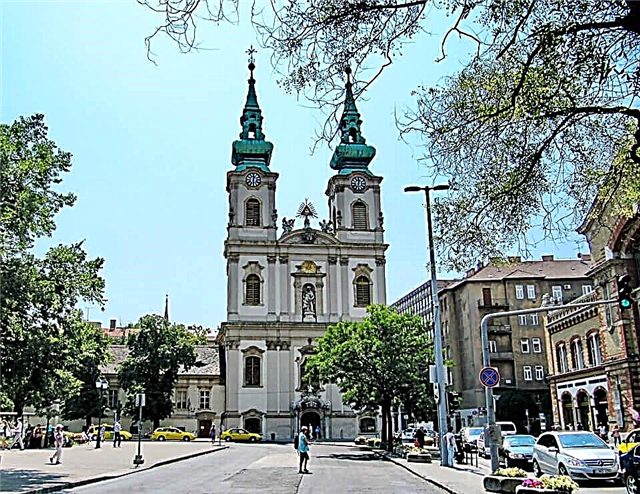
The decoration of the Servite Square is the snow-white Church of St. Anne, built in 1732 in the Baroque style. Today it appears in an eclectic façade redesigned in 1878, which does not diminish its artistic value. The church was built by the order of the Servites, meaning servants of Mary. On its façade, of interest are the columns of Mary, statues located in niches, openwork rose windows and elements of elaborate decor. A graceful bell tower rises above the temple. Its interior features elaborate altars with unique icons and a statue of Pope John XXIII.
Former Turkish Bank Building
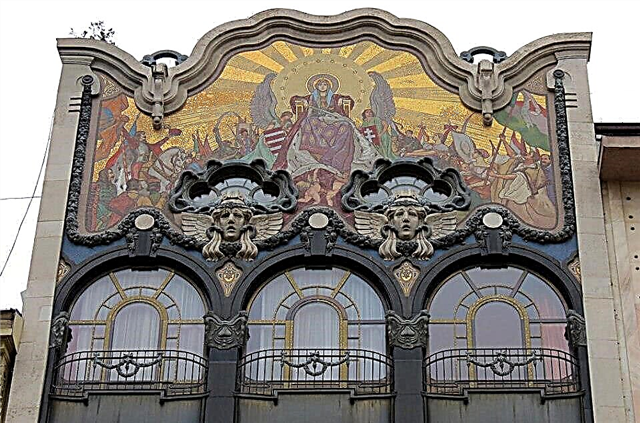
Another attraction of Servite Square, which stands out for the luxury of Hungarian Art Nouveau, is the building of the former Turkish Bank, built in 1906. It will be remembered for the amazing mosaic fresco on the pediment called "Glory to Hungary", decorated with bas-reliefs of jellyfish below. The mosaic depicts the Virgin Mary surrounded by two angels, towering over the people awaiting her blessing.
The facade also looks bright thanks to large arched windows with balconies, bright mosaics on the portico. From here, walk past the yellow and red Baroque City Council building to the Great Synagogue.
Great Synagogue
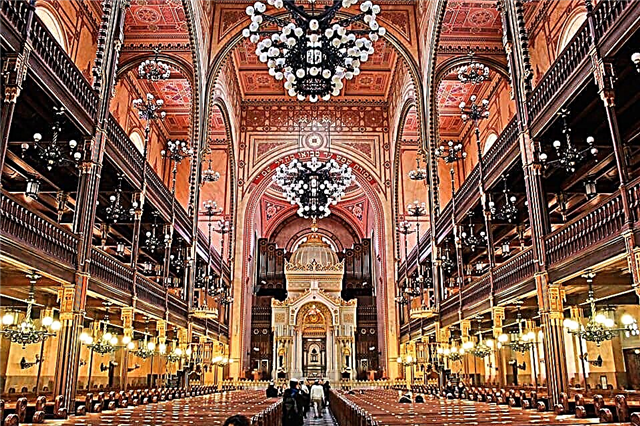
The main synagogue, built in the middle of the 19th century, is a popular tourist attraction. It was designed in Byzantine style architecture with the addition of oriental motifs to the design of the facade and interior. The interior of the synagogue will remind you of a Catholic church with rows of benches, stands on the sides and an ambo serving for preaching.
Leaving the Synagogue, look into its courtyard, which has become a memorial park to the Jewish victims of the Holocaust. In memory of them, a metal weeping willow is installed, where the name of a murdered Hungarian Jew is engraved on each leaf. You can visit the Synagogue from 10.00 to 18.00 for 2250 HUF, but with a tourist card "Budapest" - 2000 HUF.
Galleries "Parisian Dvor"
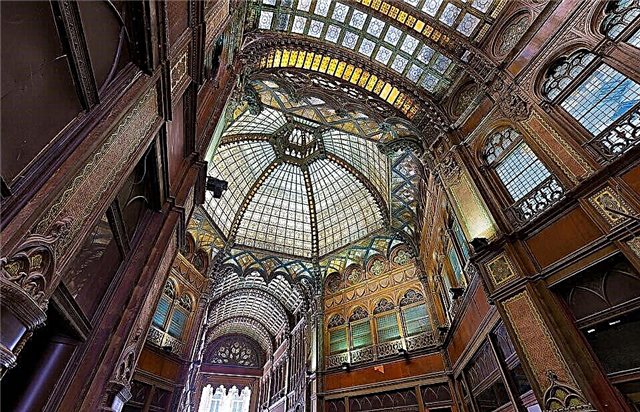
Moving from the Great Synagogue in the direction of Karoli Avenue, you will find yourself in a picturesque corner of Budapest - Ferenciek tere. It is decorated with the Franciscan Church and the arcade of the shopping arcade, called the "Parisian Court". You will see covered galleries that colorfully combine Venetian Gothic, Renaissance and Art Nouveau style. If you look closely, you will see relief bees on the walls, which are considered a symbol of thrift in Hungary.
After wandering through the shopping arcade, open on weekdays from 10.00 to 21.00, then be guided by two Art Nouveau buildings with towers facing each other, walk to the Belvaros parish church - the oldest in Budapest, then return to Karoli Avenue and walk to Edyethem Square where the university church stands.
University church
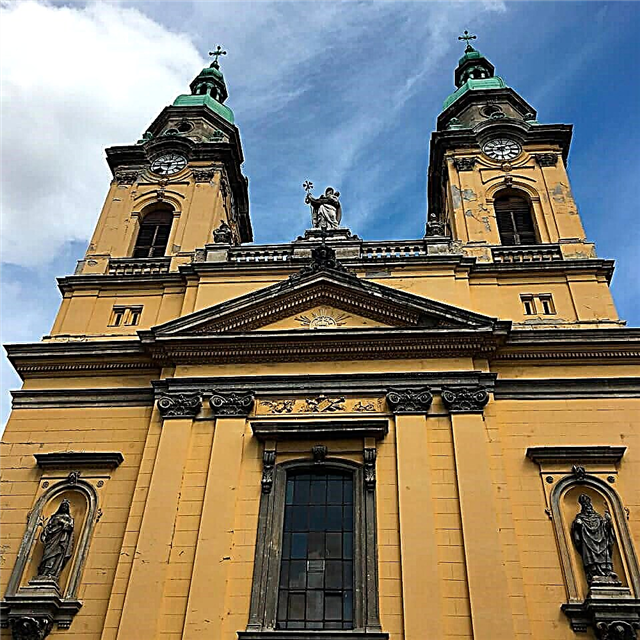
The structure of the university church is a true example of the classical baroque. The one-nave temple was built by monks of the Pavlikan Order in 1742, and 30 years later it was crowned with a tower. The church is distinguished by a high façade with columns, completed with a tympanic niche. The niche is decorated with sculptural figures of Saints Anthony and Paul, separated by the emblem of the Pavlikian order. The church porch conquers with skillful wood carving.
The walls of the hall are decorated with marble pilasters, the ceiling was painted in the 18th century by the famous Johann Bergl with frescoes depicting scenes from the life of the Virgin Mary. Behind the main altar, old sculptures of saints deserve attention. It is interesting to see the ancient pulpit, the choir fence and many items made by the monks of the order with their own hands. You can see the church interior from Monday to Saturday from 9.00 to 16.30.
Hungarian National Museum
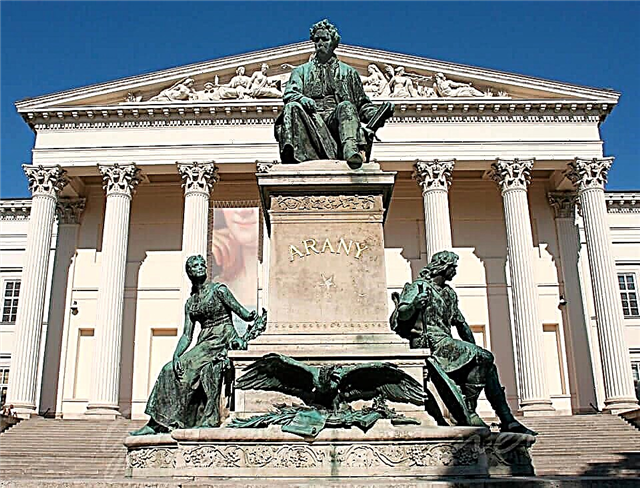
Don't miss the Hungarian National Museum, which presents the history and art of Hungary from the founding of the state until the late 1990s. You will walk to it from the square to the Museum Street. It is located in a beautiful historic building dating back to 1802. The basis of its exposition was the collection donated to the city by Count Ferenc Cacheni, which included coins, books and manuscripts of the politician.
For 2 centuries, the museum has been replenished with historical artifacts and art objects. Paying 1600 HUF entrance, you will feel awe at the sight of the clavichord, against which the brilliant hand of Mozart was leaning, the harp of Marie Antoinette and the grand pianos that Beethoven and Liszt created. The portrait gallery will introduce portraits of the kings and princes of the Arpad dynasty. Museum ticket offices are open from 10.00 to 17.00 daily, except Mondays when the museum is closed.
Central market
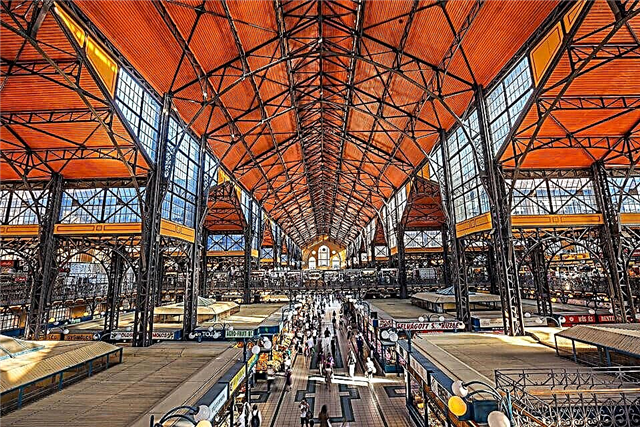
From the museum, move on to the Central Market located on Wofam Square. The market deserves a visit not only for the abundance of fruits, vegetables, famous Hungarian meats, smoked bacon, sausages and paprika. The steel building of the central market, covered with a multi-colored roof, is a real architectural masterpiece of the late 19th century. You will receive a huge aesthetic pleasure from the view of the facade, completed with turrets and openwork windows.
The market opens at 6 am, working on Mondays until 5 pm, from Tuesday to Friday until 6 pm, and on Saturday until 2 pm. It will seem strange to you that on Sunday the market is a day off! Before shopping, to compare prices and assortment, go to the supermarket located in the basement of the market.
Vaci street
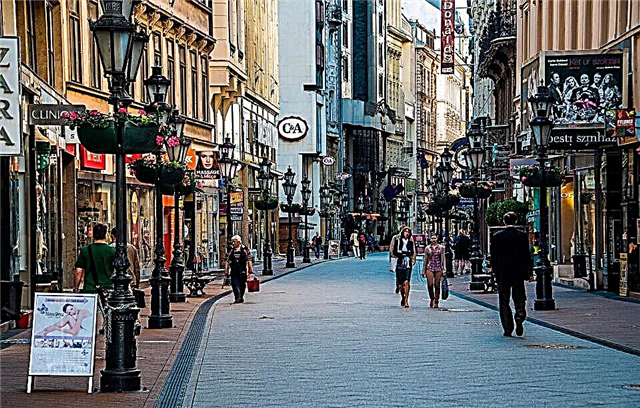
Leaving the Central Market, go straight to the pedestrian Vaci street, dotted on both sides with expensive restaurants and cafes, antique and souvenir shops, fashion boutiques. Carried away by looking at the colorful showcases, do not pass by the historical monument of the 19th century - the House of Tonet at number 11, notable for the architectural style of Art Nouveau. Its facade, decorated with bright mosaics, is delightful. We end the 3rd day of the excursion with a promenade along the picturesque Vaci street.
4th day
This day can be devoted to a break from historical and cultural attractions. Nature lovers can visit unique caves and enjoy communicating with animals. For those wishing to improve their health, the best European baths are open. We hope that the information provided here will help you make the best choice on how to spend your fourth day in the Hungarian capital.
Palveldi cave
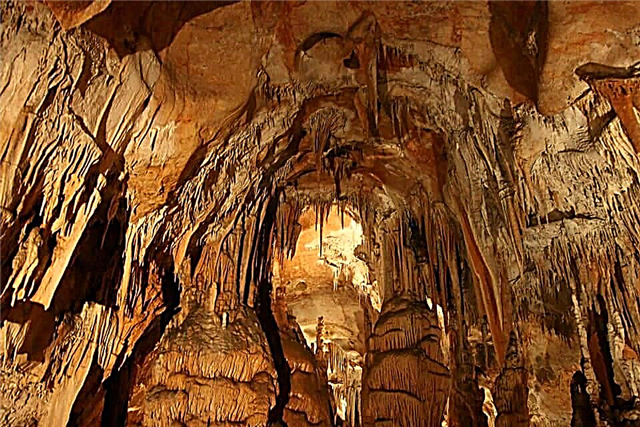
In the thickness of the Buda Hills, the Palveldi stalagmite cave, discovered in 1904, stretches for almost 30 kilometers in a network of tunnels. It is available to go through its multi-level labyrinths from Tuesday to Sunday from 10.00 to 16.00. Formed millions of years ago by the action of thermal springs, the underground kingdom is permeated with healing air. Here you will see corridors teeming with drip stones, the "Theater Hall" of the cave will surprise you with a hanging stalagmite in the shape of a "Damocles sword", according to legend, falling on unfaithful spouses.
There is an underground zoo with figures of elephants, crocodiles and exotic animals, a hall of fairy tales with guessed characters. When going to the cave, keep in mind that the excursion is suitable for tourists with good physical shape and not suitable for obese people because of the narrow corridors in some places. A ticket to the cave costs 1400 HUF, the tour is guided and lasts up to 1 hour. You can get to the cave by bus # 65, from Kolosy Square, getting off at stop 5.
Margaret Island
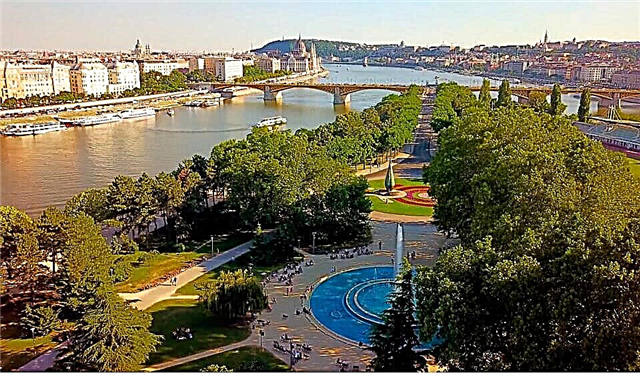
The Margaret Island, stretching on the Danube between the Arpad and Margaret bridges for 2.5 km and up to 0.5 km wide, is a protected area with a beautiful arboretum, where mineral thermal springs gush. Two high-profile hotels located within the island are part of the balneological complex with modern equipment. Wonderful landscapes of the park with a Japanese garden, multicolored alpine slides, fresh fountains, scent of rose gardens, Palantinus beach is a great place for relaxation.
The island is equipped with tennis courts, swimming pools, children's paddling pools. There is leisure time for every age. Tourists interested in history can walk through the ruins of the 13th century monastery, see the chapel of St. Michael, the singing well of Bodor and monuments to famous people of Hungary. It is a great pleasure to ride a boat from the island to the center.
Zoo
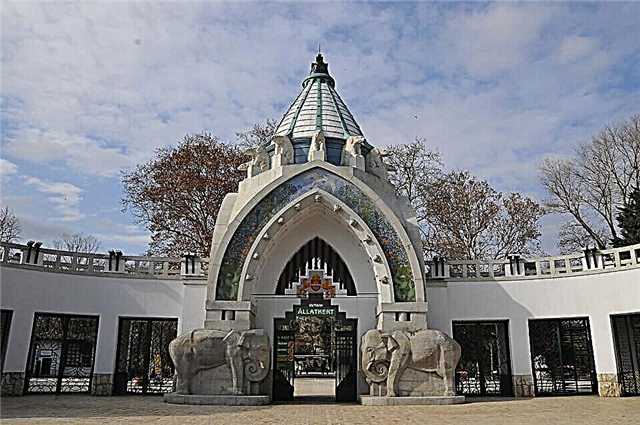
The zoo is located in the picturesque city park Varoshliget in the center. It has become one of the most visited sights of the capital. At the entrance to the zoo, they give out a map with a diagram of the location of animal species and indicate the time of their feeding. In the landscapes of the zoo, where about 1,500 plant species grow, there are many beautiful buildings and sculptures created by Hungarian designers. Among this splendor, 3 thousand different species of animals are kept in glass enclosures and corners close to their natural habitat.
In specially designated contact points, you can touch the animals and feed them, it will be a pleasure to visit the Butterfly House, the palm pavilion and the oceanarium. In summer, opening at 9.00, the zoo is open from Monday to Thursday until 18.00, from Friday to Sunday until 19.00. In winter until 16.00, in March until 17.00, April and October until 17.30, in September until 18.00. A standard adult ticket costs 3000 HUF.
Szechenyi Baths
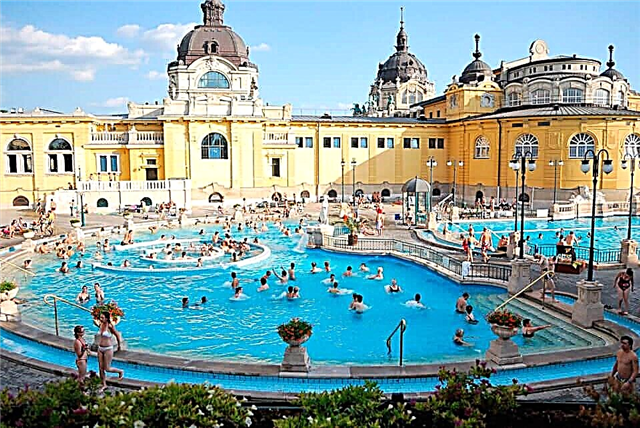
The Széchenyi Baths, dating from 1909, are considered the largest bath complex in Budapest and Europe. Externally, the building of the bathhouse is comparable to a luxurious palace. Its luxury is not inferior to the interior of 11 internal baths with mineral water from + 18⁰C to + 40⁰C - healing, calming and seething. They are complemented by several indoor and outdoor pools. One of them is the “surprise” pool. In it you will experience the effects of a vortex flow, water bubbles and jet massage with healing water at + 34⁰С.
In the Széchenyi bathing pool, you can play a game of chess while sitting in the pool, take a steam bath in light, aromatic and Finnish saunas, take health and beauty sessions in the wellness center and SPA. Bath accessories are available for rent here. Together with the entrance ticket, which costs about 14 € on weekdays and 15 € on weekends, visitors are given a bracelet that serves as the key to the locker at the same time. Changing rooms for men and women are located separately.
The Szechenyi Baths are open seven days a week from 6.00 to 22.00 - outdoor pools, until 19.00 - thermal pools, steam rooms and saunas. You can just get there by metro (yellow line) or trolleybus no. 72 (station and stop Széchenyi fürdő).
Bath Gelert
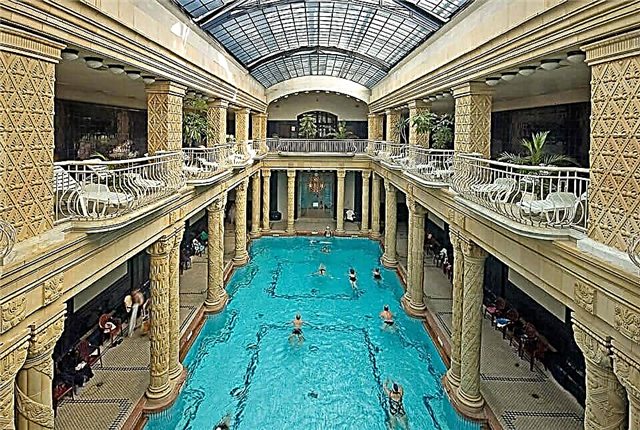
The building of the Gellert spa bath, built in 1918, looks like a luxurious palace in Art Nouveau architecture, not a hydropathic establishment, and delights in the richness of the interior. At the entrance to the hall, the beauty of the stained-glass windows, illustrating the plots of the epic, is stunning. Marble columns, bronze sculptures, leather sofas and pretty fountains that exude healing water create a luxurious setting. The Gelert Bath has 13 pools with mineral water of different temperatures, of which 10 are indoor.
Men and women bathe separately in the thermal pools, so you can stay in them without a bathing suit. If you want to swim in the open air in the wave pool or do water aerobics, bring a swimsuit, and you can rent slippers and a towel. The Gelert complex, together with a luxury hotel, decorates the right bank of the Danube - Buda.
It is easy to get here by trams: no. 19, 47, 18 and 49 and by buses no. 7A, 7 and 86. Tourists staying at the hotel can visit the bathhouse free of charge. For other visitors, the price of a ticket with a booth is from 5600 HUF to 5800 HUF for 3 hours of bathing. You can feel the bliss of relaxation in the thermal waters from 6 am to 8 pm.
Bath Lukac
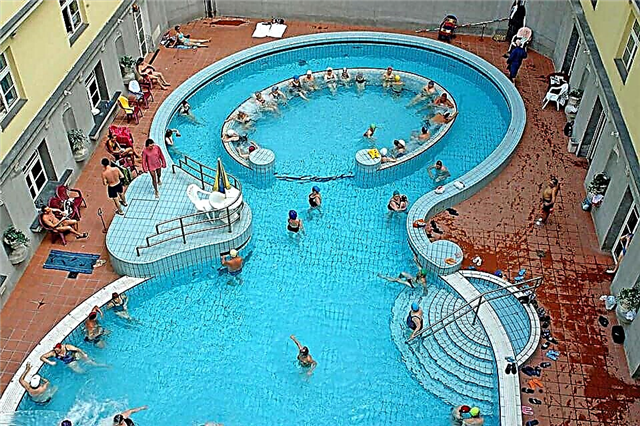
There are 5 swimming pools in the Lukacs bath, heated from + 22⁰C to + 40 ° C and one entertainment pool with water from + 33⁰C to + 35 ° C with geysers and a whirlpool. There is 1 swimming pool equipped with spine stretching devices and 2 outdoor swimming pools with a comfortable temperature of + 26 ° C. The healing water in the pools is rich in calcium, fluorine, sodium, magnesium and various microelements.
The wellness section, held in the hammam, saunas, ice plunge pool and salt room, add a pleasant lightness to the body. In the outdoor pools, romantic lighting turns on in the evenings, and incendiary discos are held on Saturdays. Soak up the thermal waters in the afternoon with a cabin rental from 3500 HUF on weekdays and up to 3700 HUF on weekends. Holders of the Budapest Card use the bathhouse free of charge during the day. Massages and mud treatments are available for an additional fee.
The opening hours of the pools are from 6.00 to 22.00. Opening hours of the drinking pavilion from 11.00 to 18.00. You can get to the Lukach baths by trams No. 4, 6, 17 and 19 and walk 5 minutes or by buses No. 91, 191, 291 to Margaret Island.
Bath Rudas
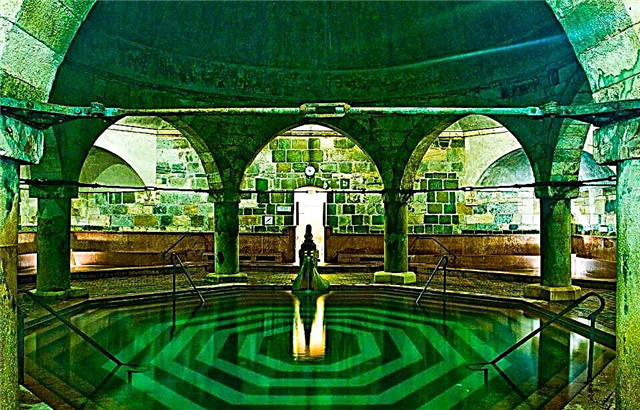
The Rudas Bath attracts attention with its architecture, expressed by an abundance of Turkish motives. Its “highlight” is the octagonal pool, called the “green pillar bath”, after the color of one of the eight multi-colored columns supporting the 10-meter-high dome.In the drinking pavilion, experience the taste of water from the mineral springs Juventus, Hungaria and Attila, from which you will take relaxing baths.
The visit to the Rudas Baths starts at 8.30 am and ends 1 hour before closing at 20.00. Only men swim on Monday, Wednesday-Friday. On Tuesday, the entire bathhouse is given to women. On Saturdays and Sundays, women and men visit the bathhouse together.
A package ticket including wellness, thermal and swimming pools will cost HUF 5,000 during the day and HUF 500 more at night. A visit in the morning before 12.00 costs 2800 HUF, in the afternoon with a thermal pool and a cabin - 3500 HUF. Travel to the baths by buses 7, 8E, 108E, 110, 112, 907 and 973 and trams - 17, 19, 41, 56 and 56A.
Kirai Bath
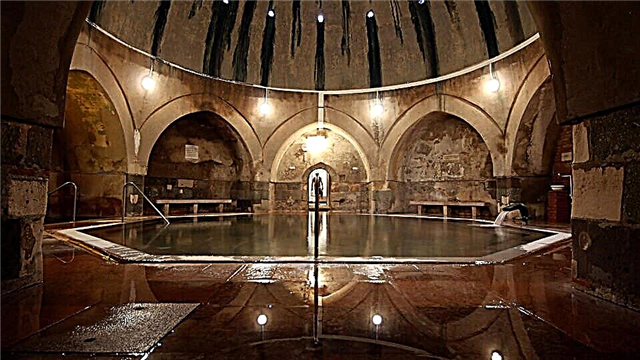
Royal Turkish Baths - Kiray, built in the 16th century by the Turks, can be recognized by the roofs resembling mushroom caps. Visitors experience the fairytale atmosphere of the baths, enhanced by overhanging ceilings and intimate light. There are usually not many people in a large hall with a round pool covered with a dome, so in an atmosphere of silence it is possible to plunge into a state of nirvana lying in warm water with light steam emanating from it.
Thermal water in the royal bath comes from the springs of the Lukas bath through the water supply, so there is no difference in the composition of the mineral water. A ticket here costs 2600 HUF with a booth. There is no division into women and men, except for the changing rooms, everyone swims together. Baths are open from 9.00 to 21.00, and the ticket office closes at 20.00.
It's easy to get here: from the Batthyany ter metro you have to go in the direction of Margaret Island. Taking trams 4, 6, get off at the “Margit hit” stop and walk along street Fő towards the castle. By the way, they are named royal by the name of one of the owners - Koening, which translates as king.
Dangar Bath
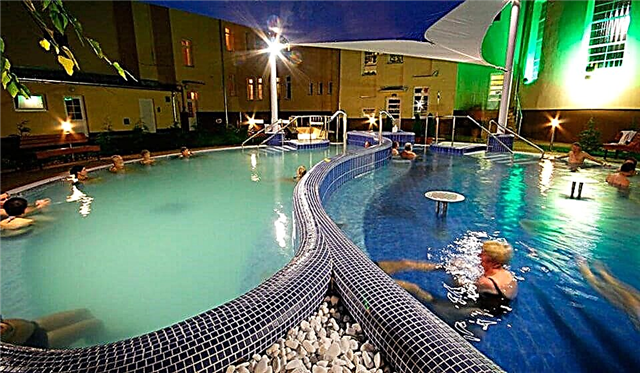
The Dandar Bath was built in 1930 on a small street near the Petofi Bridge. Dangar was built as a folk bath. This institution remains to this day, given that the prices for services here are democratic. The cheapest ticket in the evening is 1100 HUF, and the standard ticket is 1450 HUF. A separate ticket is sold for each type of pool in the bath.
The infrastructure of the health establishment does not lag behind more eminent relatives. Inside there are spacious baths, showers and a comfortable sauna, a steam bath and a cold pool, two indoor and outdoor pools with a temperature of + 36⁰C - + 38⁰C.
The bath has its own well with carbon dioxide, hydrocarbonate-calcium water with a high fluorine content. You need to go to the bathing house by tram number 2 to the Haller street stop and walk a little, focusing on the Zwack - Unicum factory, which produces the famous Hungarian liqueur. The bath is open from Monday to Friday from 6.00 to 20.00, Saturday and Sunday until 14.00.
Evening walk through the city center and its bars
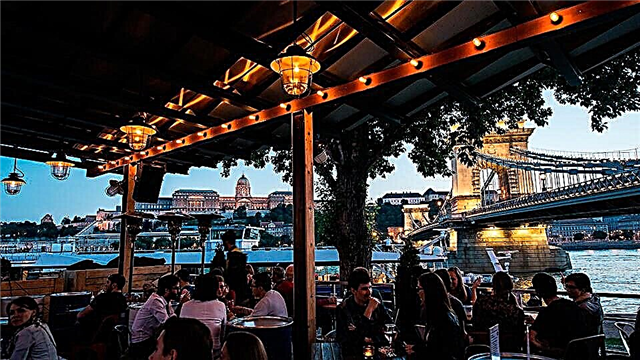
Twilight will descend only in Budapest, the doors of museums and temples are closed. Then the way opens to the world of the bewitching beauty of night streets, bars with the originality of interiors, intoxicating drinks and the atmosphere reigning in them. When the stars are lit in the sky, you can fully experience the spirit of Budapest. On an evening walk, you will be imbued with the energy of St. Stephen's Cathedral, seen from a different angle and light.
On the chain bridge, breathtakingly illuminated, you will learn a lot about the historical districts of Buda and Pest, enjoy the panorama of the Danube, admire the glowing building of the world's most beautiful Parliament and feel the aura of Freedom Square. We suggest completing the excursion program in a hike through the ruin bars, which will appeal not only to alcohol lovers.
You will be amazed by the interiors and décor of ruin bars with a pig-shaped disco ball, a shell-shaped bar counter and many cool details. After visiting 5 of these establishments, you will learn about the origins of the ruin-bar culture, get acquainted with their architecture, courtyards, chat with the local public and taste signature cocktails. The excursion takes the form of an exciting walking tour for 1-10 people.
Day 5
The last day of your stay, having gone through the obligatory program on your own, traditionally included in numerous tours to the sights of the Hungarian capital, I want to end with a bright final chord. At the end of our voyage, we will offer several interesting places and entertainment, so that you can choose what you like.
Eger and Miskolctapolca
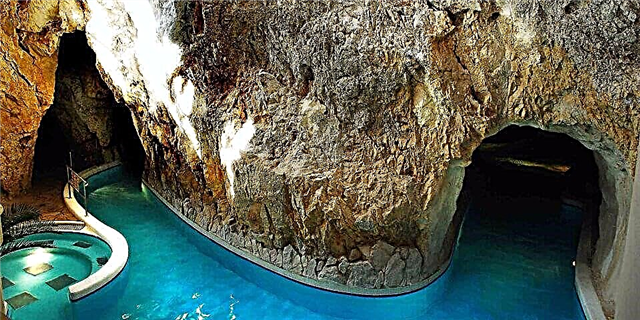
A trip to the only unique baths in Europe in Miskolctapolc, located in the bosom of a cave surrounded by a beech forest, will be an unforgettable event in life. Having received a two-hour pleasure (from 11.00 to 13.00) in the thermal pool with beautifully illuminated + 30⁰C water with hydromassage, then having rest in the stalactite hall, you will go on a two-hour sightseeing excursion to Eger.
In this picturesque city, imbued with a medieval atmosphere emanating from baroque buildings, you will see all the sights and admire the architecture of the old minaret. Further, the path will lead to the Valley of Beauties, where in an original Hungarian tavern, you will be treated to national cuisine, and in one of the wine cellars you will enjoy a tasting of Eger wine, feel the taste of the famous "Bull's Blood" made from 6 varieties of grapes.
Lake Balaton and the thermal baths of Heviz
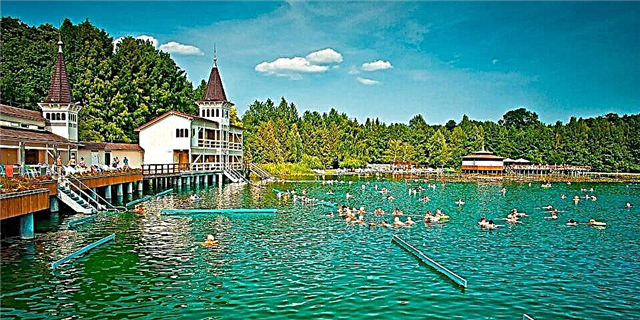
You can go to Lake Balaton with a visit to the thermal baths of Heviz in a group excursion lasting 11 hours. In it you will visit ancient cities, admire lakes recognized as natural monuments, improve your health in thermal and mineral springs. On the way to Lake Balaton, stop at Tihany Abbey - the burial place of King Andras I. Arriving in Balatonfured, get acquainted with the largest resort on the northern shore of Lake Balaton, the healing springs of which, curing diseases of internal organs, are famous since the times of the Roman Empire.
From here, the path will lead to the ancient city of Keszthely, where you will see one of the largest Hungarian estates - the Festetics Palace. In the end, swim in the greatest thermal lake Heviz, which has a beneficial effect on joint diseases, osteochondrosis, blood circulation and potency. Don't forget to bring your swimwear.
Trip to Vienna
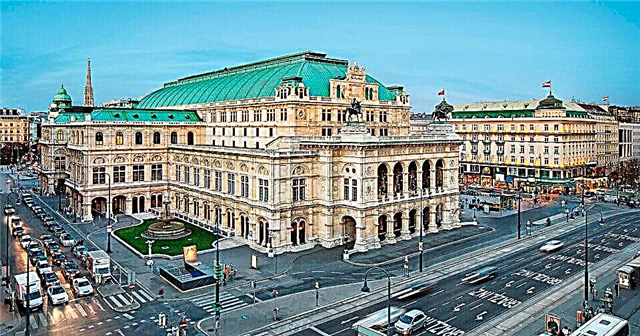
You can go on a group excursion to Vienna. The excursion route starts from the main boulevard of the Austrian capital - Ringstrasse, with attractions located on it: the Parliament, built in the antique style, the City Hall, the world famous Vienna Opera. After enjoying the architecture of secular buildings, walk to the Gothic St. Stephen's Cathedral - the architectural masterpiece and symbol of Vienna.
After exploring the historic center, you will be invited to the Belvedere art complex, which consists of 2 parts: the Upper Belvedere and the Lower. In the 7 rooms of the Upper Belvedere, there is an art collection of Austrian art, which, if desired, can be viewed after the tour. In the Lower Belvedere, admire the picturesque garden that previously surrounded the palace.
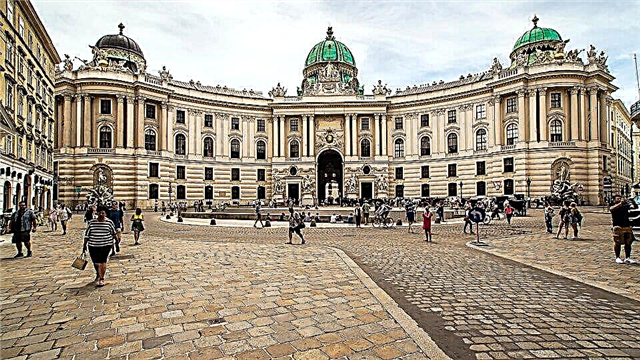
Next, you will see the Hovburg imperial residence with 19 palaces, a church with a chapel and the library of Charles IV, where you will focus on exploring the Hofburg treasury. At the end of the excursion, there will be free time to walk and look into the famous Viennese cafe Sacher, famous for chocolate desserts baked according to an old recipe.
Szentendre - Visegrad - Esztergom
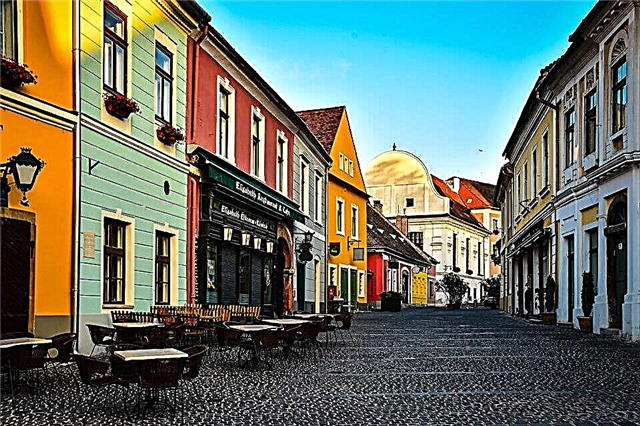
A necklace of ancient towns is scattered along the bend of the Danube. They keep fragments of the history of the times of the rule of the Romans and Turks, castles of the Middle Ages, churches that crowned the tops of hills and mountains. The richest Hungarian history is concentrated in the cities of Szentendre, Visegrad and Esztergom, which can be visited by an individual excursion for 1-4 people.
- Sentendere is a town with old cobblestone streets leading to a church hill.It is interesting for its Orthodox churches, the Catholic Basilica of Saints Peter and Paul, the Reformed Assumption Church and the Roman Catholic Church with an old sundial. You will be able to visit the unique museums of ceramics and marzipan - the kingdom of sweets baked in the images of heroes of fairy-tale characters and celebrities. Lunch in an authentic restaurant and a visit to the wine cellar await you.
- Visegrad, a city that was the capital of Hungary in antiquity, will acquaint you with the ruins of a Roman fortress on a high hill left from the beginning of the 11th century and will conquer you with a picturesque landscape that appears from the height of the ruins. On the way to the citadel, you will see the hexagonal watchtower of Solomon, which became the place of imprisonment of Count Dracula, the former ruler of Wallachia. At the foot of the mountain, the palace with 350 rooms, which belonged to King Matthias Corvinus, amazes with its former luxury.
- Esztergom is the oldest religious center in Hungary, located near the border with Slovakia and the seat of the Archbishop of Esztergom. The city is famous for the main Catholic church in Hungary - the Basilica of St. Adalbert, the reconstructed Royal Palace of the 10th century belonging to the Arpad dynasty, the Museum of the Fortress and the Archbishop's Palace, which houses a Christian museum with a collection of Hungarian and Western European fine arts.
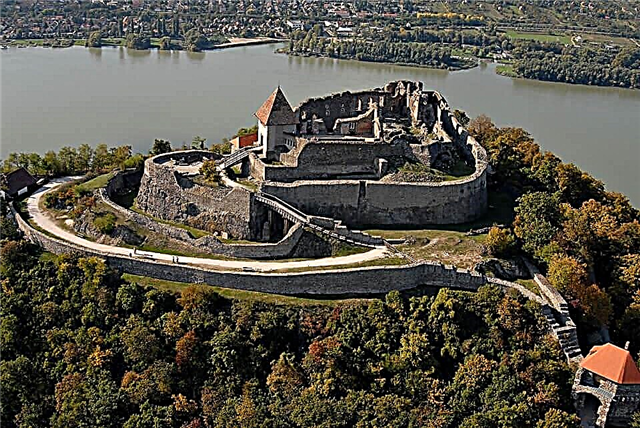
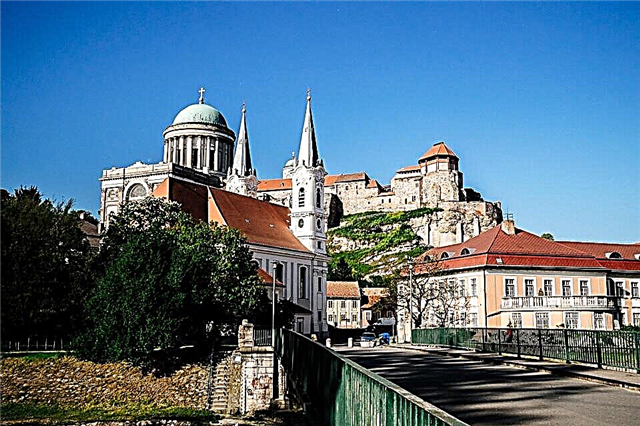
Pannonhalma Abbey
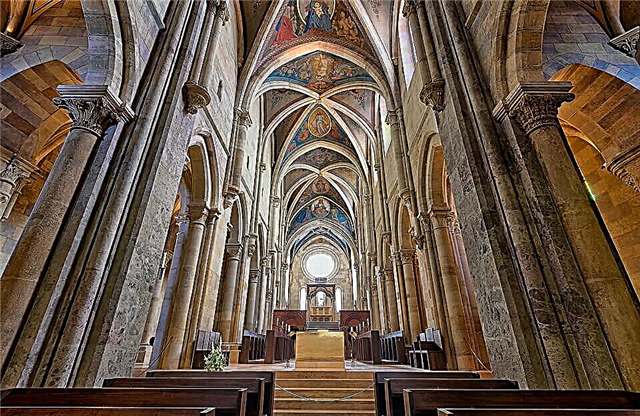
The world's second largest Abbey of Pannohalma is a UNESCO World Heritage Site. The monastic estates occupy the top of the hill of St. Martin, 282 meters high. The emergence of the monastery on this site goes back to 996. On a car tour, you will be briefly told the history of the name of the hill, which, according to legend, became the birthplace of St. Martin of Tours. You will visit the basilica, crypt, see the library of the abbey, taste delicious wines - the products of the monastery winery.
At the abbey you can buy chocolates made by monks, wine, lavender oil and soap. At the end of your trip, dine at the panoramic Viator restaurant overlooking the magnificent local landscapes. Car excursion, lasting 8 hours, is designed for 1-7 people. Includes: the way from the hotel to Pannonhalm and back, escort of a driver who speaks Russian; payment for renting a business class car, toll roads and parking. In addition, you will have to pay 8 € for visiting the abbey, for wine tasting and lunch.
What and how can you save
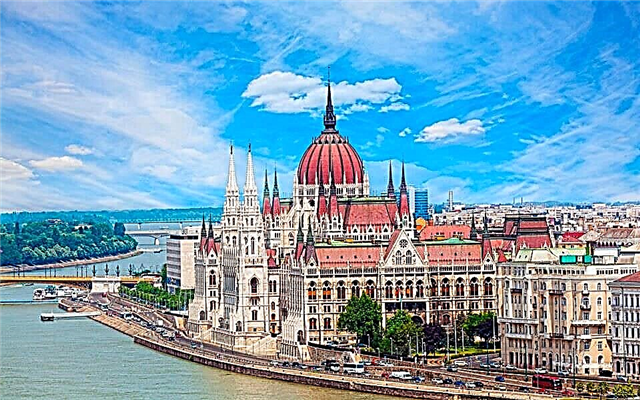
It is pleasant to spend less money on any trip, leaving it for other needs and pleasures. We will recommend several options on how to save money.
- Book tickets and hotel in advance. The cheapest place to live is hostels, which should be booked a month in advance.
- It is cheaper to travel from the airport to the city by shuttle bus No. E 100, which takes half an hour to the city to the Deak Ferenc ter metro station. You can buy a ticket for a shuttle ride for 900 HUF at the airport machine with a menu in Russian
- A large amount of money should not be changed at the airport - the rate is more expensive. It is better to use a card by withdrawing a small amount from an ATM in the first case.
- Buy the Budapest Card directly at the airport or online in advance if you plan to travel a lot and visit museums. With such a card, it is convenient to travel for 3 days on all types of public transport, you can visit 7 museums and the thermal baths of Lukas. It provides 20% discounts at the Ghererti and Szechenyi baths, for travel on the Hop On Hop Off tourist bus. You can get up to 40% discount in 15 cafes and restaurants. Visiting museums with a paid entrance and some attractions will be cheaper from 10% to 50%.
- Do not throw away the coupon booklet that came with your Hop On Hop Off Tourist Bus ticket. Coupons give 30% discounts for visiting the Hospital in the Rock Museum, for treating goulash in the central cafe and free mulled wine in one of the bars, and several other bonuses.
- It is better to exchange money at ATMs on the outskirts, where the rate is better. You can pay with cards almost everywhere, but keep in mind that each store and restaurant has its own course.
- Buy groceries in large supermarkets, paying attention to the price difference, take advantage of business lunches in cafes and restaurants. You can have a set lunch for about 8.5 €, and a 3-course lunch will cost about 9 € -13 €.
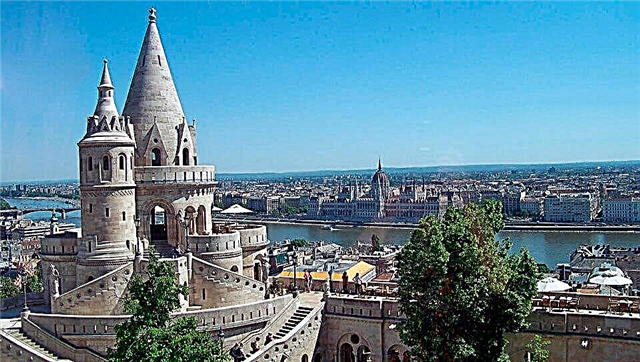
Using these tips, knowing the real prices and the payment algorithm, you will not spend a lot of money without denying yourself anything.


